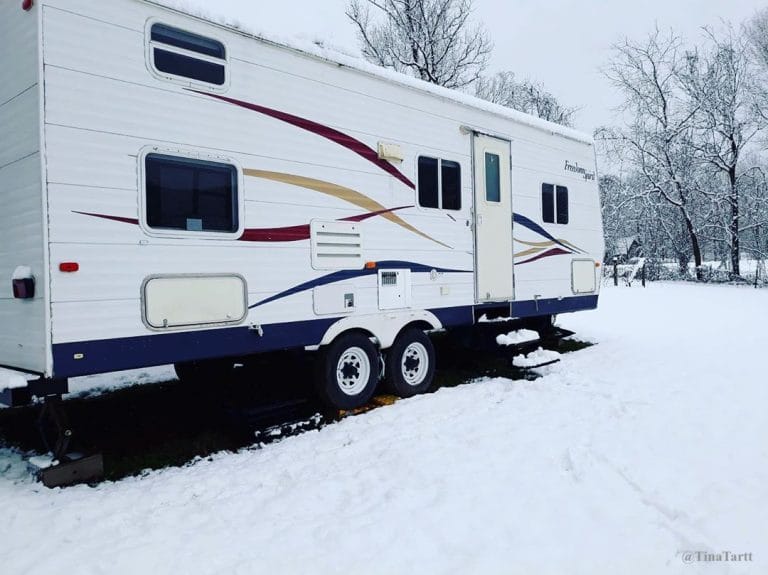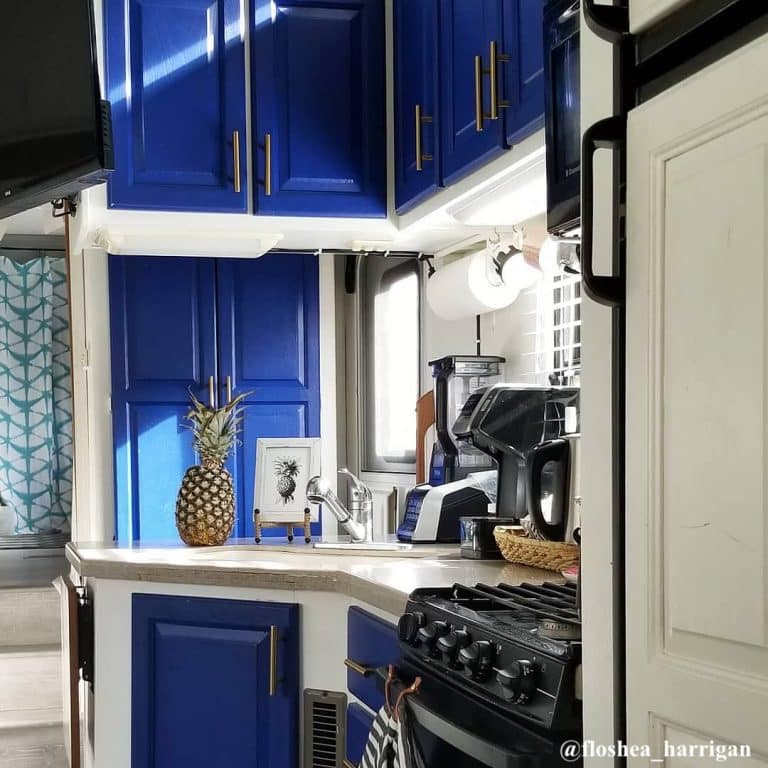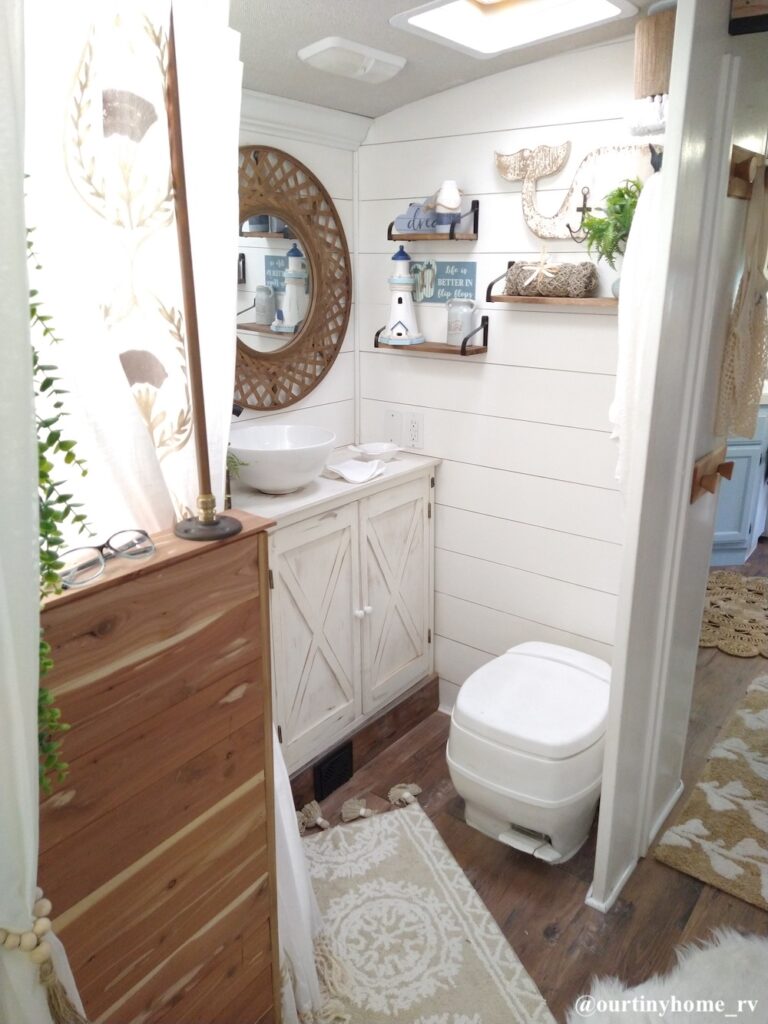Winter RVing Checklist to Prevent Damage to Your Camper
This post may contain affiliate links.
Even if you don’t plan to take your RV into freezing temperatures, sometimes temperatures can drop quicker than expected during your travels. Knowing how to protect your RV when you encounter freezing temps is key to still having an enjoyable and safe trip.
This guide outlines important steps to take if living or traveling in your RV in winter. We’ve also included a downloadable version of the winter RVing checklist items covered here. (Be sure to save that at the end of this article!)
Storing your RV until the weather warms up? We totally get that! Be sure to read this guide of steps to take before you store your RV.
Protect Your RV’s Plumbing & Water Connections
One of the main concerns when RVing in cold weather is the potential that pipes could freeze. This can cause broken water lines, leaking, and other damage. This can also affect your water heater and pumps, which would significantly add to the cost of repairs.
Dealing with a burst pipe or leak in your RV plumbing is definitely something you want to avoid. Here are some important steps to take to protect your plumbing and water connections if you may be encountering some colder or near-freezing conditions.

Checklist for Protecting RV Plumbing in Winter
- Ensure all water connection points are protected from freezing or are disconnected.
- Protect all pipes, hoses, and tanks from freezing temperatures.
- There are water line heaters and other methods, like using heat lamps, that RVers use. Just be sure to take precautions and know the risks of each.
- Make sure the sewage hose drains downward with no dips where liquid can collect. (Or simply put it away when not in use.)
- Keep RV antifreeze on hand to winterize RV plumbing if needed.
Important Note on Winterization
If you know you will be RVing in winter weather or camping in freezing conditions, it probably makes the most sense to winterize your RV before your trip to avoid any issues.
Your RV’s manual should include instructions on how to correctly winterize your RV. Not all rigs need the same level of winterization, so be sure to check before starting the process. If you plan to travel in winter often, an all-season RV may be the best fit for you.
This video offers an overview of the basics of RV winterization:
You can follow our step-by-step winterization guide here.
Prepare Your Heating Sources
Before heading out on a winter RVing trip, it is extremely important to make sure your sources of heating are in good condition and ready to keep you warm.
- Check your heating system (or have it looked at) and do any routine maintenance outlined in your RV’s manual.
- Have a backup or secondary heating source ready for use, with at least one option that will work in case of power failure.
- There is a wide variety of heating appliances RVers use. An infrared heater, like the Dr. Infrared brand, and electric fireplace heaters are common options. Some even use wood heaters (just take precautions if you go that route!).
- Protect your propane tanks from extreme temperatures as needed.

Prevent Heat Loss While RV Camping in Winter
If you’ll be camping in a cold area for more than a night or so, it is worth your time to make an effort to prevent heat loss in your RV. This will keep you warmer, save on your electric bill, and help to protect your RV.
- Identify drafts around slides, windows, doors, etc., and seal those areas as needed.
- Place skirting around your RV and make sure it can withstand strong winds. This will help to prevent drafts under your rig and protect any exposed pipes.
- There are vinyl and even inflatable skirting options, as well as many DIY solutions. Check out the top RV skirting options here.

- Add extra insulation as needed to reduce heat loss through floors, exterior walls, tops of slides, and doors (including storage bay doors).
- Reflectix reflective bubble insulation is a popular option among RVers..
- Insulate windows and skylights from inside, outside, or both.
Other Preventative Care for Winter RVing
In addition to just regular RV maintenance, you should take a few extra steps for preparing your RV and packing list in winter.
- Make sure your smoke detectors, propane detectors, carbon monoxide detectors, and fire extinguishers have been tested and are functioning. This becomes extra important in the winter when you are using heating sources.
- Inspect your roof and make sure all vents are cleared. If there is snowfall, be sure to clear them after as well.
- Have solar or battery-powered lighting sources on hand in case of power failure.

- Pack warm weather clothing for everyone you will be traveling with, as well as extra bedding in case of emergencies. Don’t forget your pets also!
- Stock the RV with enough food and water to last at least a few days if driving conditions are unsafe.
- Bring icemelt to put down on RV steps and pavement if needed.
- Ensure your RV fridge can be used for prolonged periods of sub-zero temperatures.
- Prepare any vehicles you travel with are prepared for winter driving and have what you need for defrosting and de-icing.

Are You Prepared for RVing in Winter?
This is a great resource to save on your phone or print out to make sure you have covered all the important preparation steps before RVing in winter or going into areas that could potentially have freezing temperatures.
Remember to keep an eye on the weather and avoid situations that will put you in danger when driving or camping in your motorhome or travel trailer.
Read Next: How to Stay Warm in a Cold Camper
Brooke is a previous full-time RVer and long-time freelance writer and editor. Although she sold her motorhome to travel internationally, she has remained active in the RVing community through her client work and friends. In addition to two self-published books, Moving Away and Home Flexible, Brooke shares her travels, nomad tips, and other insights on TrailingAway.com.











